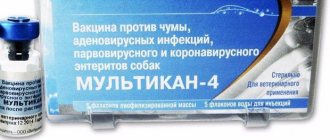pharmachologic effect
Oxytocin is a hormone produced by the hypothalamus in the human body. Through the hypothalamic-pituitary tract along the axons of neurons, it follows to the posterior part of the pituitary gland, where it accumulates and is stored.
Oxytocin is composed primarily of proteins and is intended to stimulate the muscles of the uterus to contract during late gestation and throughout the entire birth process. The hormone regulates the body during childbirth, the behavior and reactions of women during pregnancy and for some time after childbirth.
Thanks to the development of science, today oxytocin is synthesized artificially. The synthetic hormone acts only on the uterine receptors that are sensitive to it, since it does not contain impurities of other active substances. Unlike natural oxytocin, artificial substitutes are protein-free and suitable for intravenous use and do not cause anaphylactic reactions.
The principle of action of the drug is based on interaction with myometrial cells: the permeability of the membrane for potassium ions is stimulated, the rate of reactions increases. If you give oxytocin injections after childbirth, the uterus contracts more often and more intensely. The secretion of breast milk increases, the body produces more prolactin. The drug does not change blood and intracranial pressure.
If the medicine is administered intravenously, its effect appears gradually, decreasing over the course of an hour. Intramuscular administration causes an effect after 2-5 minutes, which lasts up to 3 hours. The strength of the effect on the human body is individual and depends on the density of receptors in the muscles of the uterus. The medicine is quickly absorbed into the blood through the mucous membranes.
Protein binding - approximately 30%. T ½ 1-6 minutes, this time is reduced in the third trimester of pregnancy and during breastfeeding. Oxytocin is processed in the liver and kidneys.
Indications and contraindications
The use of Oxytocin is prescribed for:
- termination of pregnancy;
- strengthening labor activity;
- prevention and relief of uterine bleeding;
- uterine contractions after cesarean section;
- restoration of the normal size of the uterus after natural childbirth;
- milk production during lactation;
- preventing retention of blood and parts of the placenta in the uterine cavity after childbirth;
- contractions of the uterine walls after medical abortions and miscarriages;
- relief of symptoms of premenstrual syndrome in women (swelling, weight gain, pain).

The use of Oxytocin solution helps improve the mental state of women. Patients who received therapy in the form of a nasal spray experienced weight loss and decreased appetite. Libido and potency, on the contrary, increased. It is impossible to administer oxytocin intramuscularly at home. The use of the drug is possible only in a hospital, so the drug can only be purchased at the pharmacy in ampoules for injections and droppers.
Before prescribing or taking Oxytocin, it is important to familiarize yourself with the contraindications, since ignoring them can cause severe complications, including death.
The drug is contraindicated:
- in case of individual intolerance to components;
- with severe hypertension;
- if there is a history of diseases of the cardiovascular system;
- when there is a threat of rupture of the walls of the uterus;
- if the woman's pelvis is narrower than the fetal head;
- when the fetus is in the wrong position in the womb;
- in the presence of scars on the uterus, which can be destroyed during intense labor;
- if placenta previa is determined by ultrasound;
- when the birth process requires surgical intervention;
- with fetal hypoxia;
- if a woman develops sepsis after childbirth or miscarriage.
Injections of oxytocin, as well as administration of the drug using a dropper, should only be carried out by a medical professional under the supervision of a doctor. Uncontrolled use of the medicine is life-threatening.
Instructions for use OXYTOCIN-RICHTER
The dose is determined taking into account the individual sensitivity to oxytocin of the pregnant woman and the fetus. The drug is administered intravenously or intramuscularly.
Provocation and stimulation of labor
To provoke and stimulate labor, oxytocin is used exclusively in the form of an intravenous drip infusion. Compliance with the prescribed infusion rate is mandatory. In case of excessive increase in contractile activity of the uterus, the infusion should be stopped immediately, as a result of excessive contractile activity of the uterus quickly decreases.
1. Begin with an infusion of saline solution that does not contain oxytocin.
2. To prepare a standard oxytocin infusion, dissolve 1 ml (5 IU) of oxytocin in 1000 ml of non-hydrating fluid and mix. 1 ml of infusion solution prepared in this way contains 5 IU of oxytocin. For precise dosing of the solution, an infusion pump or other similar device should be used.
3. The rate of administration of the initial dose should not exceed 0.5-4 IU / min. Every 20-40 minutes, the dose can be increased by 1-2 IU until the desired degree of uterine contractile activity is achieved. Once the degree of uterine contractions corresponding to spontaneous labor has been achieved and the uterine os is dilated by 4-6 cm, in the absence of signs of fetal distress, the infusion rate can be gradually reduced at the same pace as when increasing the speed. At the end of the third trimester of pregnancy, oxytocin can be administered more quickly, but caution should be used since only in rare cases may an infusion rate of 8-9 IU/min be required. In case of preterm labor, more rapid administration of oxytocin may be required; however, sometimes the speed can exceed 20 IU/min.
4. The fetal heartbeat, resting uterine tone, frequency, duration and strength of uterine contractions should be monitored.
5. In case of excessive uterine contractions or fetal distress, oxytocin administration should be stopped immediately and oxygen therapy should be provided to the parturient, while the parturient and fetus should be under the supervision of a specialist physician.
To stop uterine bleeding in the postpartum period
1.IV drip infusion:
- dissolve 10-40 IU of oxytocin in 1000 ml of infusion solution. To prevent uterine atony, the rate of oxytocin administration should be 20-40 IU/min.
2) IM oxytocin is administered at a dose of 5 IU (1 ml) after separation of the placenta.
Incomplete or failed abortion
Oxytocin is administered intravenously as an infusion. Oxytocin at a dose of 10 IU is diluted in 500 ml of saline solution or a mixture of 5% dextrose with saline solution. The IV infusion rate is 20-40 drops/min.
Diagnosis of fetoplacental insufficiency (stress test with oxytocin)
The drug is administered intravenously as an infusion at an initial rate of 0.5 IU / min and doubled every 20 minutes until an effective dose is reached, usually 5-6 IU / min, with a maximum of 20 IU / min. After the appearance of 3 moderate contractions lasting 40-60 seconds each within a 10-minute period, you should stop administering oxytocin and monitor the change, i.e. slowing down the fetal heart rate.
Instructions for the use of oxytocin injections
Before using Oxytocin, a test reaction is performed to determine individual tolerance. This is done to assess the reaction of the fetus and placenta.
Dosage of the drug
For a dropper, oxytocin is diluted with 500 ml of glucose (5%) or NaCl (0.9%). The amount of active substance in the solution depends on the purpose of use. Thus, when stimulating labor, it is recommended to use 10 IU (infusion rate 3 ml/h) or 30 IU (infusion rate 1 ml/h). The same doses are used for uterine atony.
The introduction of the solution begins at 0.001-0.002 IU/min, and then every half hour the speed is gradually increased, monitoring the condition of the woman in labor and the fetus (heartbeat, duration of contractions and the interval between them). Stop the infusion when active labor is achieved, when up to 4 contractions are recorded in a 10-minute interval. Signs of fetal hypoxia or hyperactivity of the uterine muscles are a signal to immediately stop the drip.
It has been established that the introduction of a synthetic hormone at a rate of 0.006 IU/min makes it possible to achieve such a concentration of oxytocin in the blood plasma that is observed during childbirth in natural conditions. In most cases, the maximum required infusion rate is 0.012 IU/min, but doctors raise it to 0.02 IU/min if the drug does not work in small doses. British scientific publications note that a daily dose not exceeding 5 IU of the substance can be considered safe.
After a cesarean section with removal of the placenta, the woman in labor is immediately given an injection into a vein containing 5 IU of oxytocin.
To prevent bleeding at low pressure in the uterus, an injection of oxytocin solution is administered intravenously. If it is necessary to stop bleeding that has already developed, then use from 5 IU to 10 IU of the hormone. In severe cases, up to 30 IU of the active substance is used, administered by infusion at a rate that prevents atony of the uterine walls. An alternative route is the administration of 5-9 IU in 3 doses per day for 3 days at equal intervals intramuscularly. An injection with a syringe is moderately painful, so when administered intramuscularly it can be diluted with lidocaine.

It is forbidden to administer oxytocin by intravenous injection rapidly, as this sharply reduces blood pressure and can provoke arrhythmia and respiratory failure.
In order to abort a non-viable fetus, 5 IU of the active substance is used, which is administered intravenously or via a dropper at a rate of 0.02-0.05 IU/min.
How to inject oxytocin
In most cases, it is recommended to use intravenous administration of the drug by infusion, maintaining a safe speed, monitoring the condition of the patient and the fetus. During the procedure, the responsible doctor must monitor the heartbeat of the fetus and the woman in labor, the intensity of uterine contractions, and blood pressure.
In some cases, it is recommended to take additional precautions:
- if a discrepancy between the size of the fetal head and the woman’s pelvis is established;
- with hypertension that developed during pregnancy;
- if there is a history of disturbances in the normal functioning of the cardiovascular system;
- during labor and late pregnancy;
- in the presence of scars in the lower segment of the uterus;
- if the fetus has died inside the uterus or the amniotic fluid is contaminated with meconium (there is a risk of developing an embolism).
If amniotic fluid has caused acute intoxication and hyponatremia, then the patient is contraindicated in administering large volumes of fluid.
When a long course of oxytocin is prescribed, the total volume of the solution for droppers is reduced and solutions are used that contain electrolytes rather than glucose as an auxiliary substance.
Side effects and overdose
Side effects of the synthetic hormone oxytocin include:
- nausea, vomiting;
- heart rhythm disturbances;
- allergic reactions;
- hypertension;
- antidiuretic effect;
- placental abruption, uterine rupture as a result of excessive intensity of labor;
- decreased amount of fibrinogen in the fetus;
- subarachnoid hemorrhage;
- neonatal complications, including neonatal jaundice.

An overdose of the drug provokes excessively intense contractions of the uterus, which lead to rupture of the walls of the organ. Newborns often experience postpartum injuries of various types. If an excess dose of the hormone is detected, the doctor immediately stops administering it and prescribes diuretics.
Solution for injection Oxytocin (Oxytocin)
Instructions for medical use of the drug
Description of pharmacological action
Stimulates the smooth muscles of the uterus, increases contractile activity and myometrial tone.
Indications for use
Induction of labor, stimulation of labor, cesarean section (during the operation), uterine atony and atonic uterine bleeding, incomplete or septic abortion.
Release form
solution for injection 2 IU/2 ml; ampoule 2 ml box (box) 5; solution for injection 5 IU/ml; ampoule 1 ml box (box) 5;
Pharmacodynamics
Stimulates lactation by promoting the contraction of myoepithelial cells in the alveoli of the mammary glands. Increases the permeability of myometrial cell membranes for ions, increases its excitability, causes and enhances contractions of the smooth muscles of the uterus.
Contraindications for use
Threatening uterine rupture, transverse and oblique position of the fetus, discrepancy between the size of the fetal head and the size of the pelvis, narrow pelvis.
Side effects
Uterine hypertonicity, fetal intrauterine hypoxia, tachycardia, short-term arterial hypotension, bronchospasm.
Directions for use and doses
IV or IM. To stimulate labor, 0.5–2.0 IU of oxytocin is administered intramuscularly; if necessary, repeat injections every 30–60 minutes. To prevent hypotonic uterine bleeding, oxytocin is administered intramuscularly at 3–5 IU 2–3 times a day daily for 2–3 days, and for the treatment of hypotonic uterine bleeding, 5–8 IU is administered 2–3 times a day for 3 days. . During a cesarean section (after removal of the placenta), oxytocin is injected into the uterine wall in a dose of 3–5 IU.
Interactions with other drugs
Enhances the effect of sympathomimetics (combine with caution).
Storage conditions
List B.: In a dark place, at a temperature of 2–15 °C.
Best before date
36 months
ATX classification:
H Hormones for systemic use (excluding sex hormones)
H01 Hormones of the hypothalamus and pituitary gland and their analogues
H01B Hormones of the posterior lobe of the pituitary gland
H01BB Oxytocin and its derivatives
H01BB02 Oxytocin








